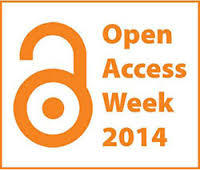http://openscience.com/open-access-advocates-like-mensheviks-bolsheviks/
Zur Größenordnung aktueller OA-Publikationen:
"Pretty soon we are going to reach the point where open access journals have a 15% share of newly published articles. There are also (very often really high profile) journals that make all their content open access on their own websites, let’s say, after one year from initial publication. There are about 500 journals like that. When you count it together, there will be 22-23% of articles available for free on publishers’ websites, one year after publication. Together with green open access (copies that were self-archived by authors) it will be something around one third of all articles. Thus, approximately 33% of all scholarly articles are available for free one year after publication. This is not a small number."
Björk äußert sich auch zu unseriösen OA-Journals und hält diese nicht für ein schwerwiegendes Problem. Skeptisch ist er gegenüber dem grünen Weg.
"In the long term, when open access journals and article processing charges become more and more popular libraries will be reluctant to pay subscription fees. And if in addition green open access would start to reach high uptake levels of say 50%, publishers would respond with a counterattack, to try to enforce longer embargo rules. There is an internal contradiction within the green model – if it succeeds it will kill the whole subscription based system. When you take into account the current economic situation it is clear that current embargo periods will not be enough to protect journals. Universities are looking for cost reduction, and will not be able to pay for journals that will be virtually free after a short period of time. In medical research, embargo periods are important for researchers, but in the humanities and social sciences for example, they are not that crucial.
Gold open access is so simple that is almost esthetically beautiful."
Grüne Artikel müssen erst einmal gefunden werden und haben einen Format-Nachteil:
"You have to search for a green copy in various places, and a green copy may also have a different layout and page numbers than in the published version, which makes references more difficult. And it may come a year or longer after publication. People are lazy. If they cannot make a citation in just one click they will simply not do it at all."

Zur Größenordnung aktueller OA-Publikationen:
"Pretty soon we are going to reach the point where open access journals have a 15% share of newly published articles. There are also (very often really high profile) journals that make all their content open access on their own websites, let’s say, after one year from initial publication. There are about 500 journals like that. When you count it together, there will be 22-23% of articles available for free on publishers’ websites, one year after publication. Together with green open access (copies that were self-archived by authors) it will be something around one third of all articles. Thus, approximately 33% of all scholarly articles are available for free one year after publication. This is not a small number."
Björk äußert sich auch zu unseriösen OA-Journals und hält diese nicht für ein schwerwiegendes Problem. Skeptisch ist er gegenüber dem grünen Weg.
"In the long term, when open access journals and article processing charges become more and more popular libraries will be reluctant to pay subscription fees. And if in addition green open access would start to reach high uptake levels of say 50%, publishers would respond with a counterattack, to try to enforce longer embargo rules. There is an internal contradiction within the green model – if it succeeds it will kill the whole subscription based system. When you take into account the current economic situation it is clear that current embargo periods will not be enough to protect journals. Universities are looking for cost reduction, and will not be able to pay for journals that will be virtually free after a short period of time. In medical research, embargo periods are important for researchers, but in the humanities and social sciences for example, they are not that crucial.
Gold open access is so simple that is almost esthetically beautiful."
Grüne Artikel müssen erst einmal gefunden werden und haben einen Format-Nachteil:
"You have to search for a green copy in various places, and a green copy may also have a different layout and page numbers than in the published version, which makes references more difficult. And it may come a year or longer after publication. People are lazy. If they cannot make a citation in just one click they will simply not do it at all."

KlausGraf - am Donnerstag, 23. Oktober 2014, 17:44 - Rubrik: Open Access